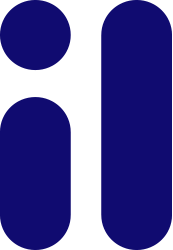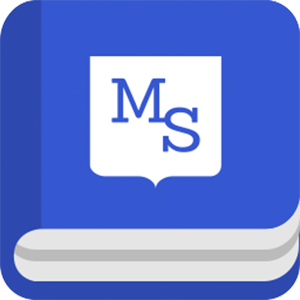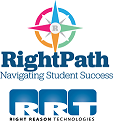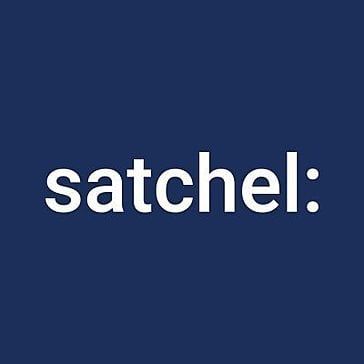Best Curriculum Management Software
Best Curriculum Management Software At A Glance
G2 takes pride in showing unbiased reviews on user satisfaction in our ratings and reports. We do not allow paid placements in any of our ratings, rankings, or reports. Learn about our scoring methodologies.
- Overview
- Pros and Cons
- User Satisfaction
- Seller Details
ThinkUp! curriculum (Grades 1-8) is a dynamic curriculum built upon a foundation of critical thinking. It was designed to develop students who can process and evaluate information at deeper levels, m
- Teacher
- Instructional Coach
- Primary/Secondary Education
- Education Management
- 47% Small-Business
- 41% Mid-Market
15,247 Twitter followers
- Overview
- Pros and Cons
- User Satisfaction
- Seller Details
Generate Lesson Plans & Other Educational Materials in Seconds Streamline your planning and prep with AI generated templates for lesson plans, writing prompts, educational handouts, student report
- 50% Small-Business
- 31% Enterprise
- Overview
- User Satisfaction
- Seller Details
Workday Student is an end-to-end student and faculty lifecycle information system that is designed to work seamlessly with Workday Financial Management, Workday Human Capital Management, Workday Payro
- Higher Education
- Education Management
- 46% Enterprise
- 43% Mid-Market
52,108 Twitter followers
- Overview
- Pros and Cons
- User Satisfaction
- Seller Details
MasteryConnect provides formative assessment and competency-based learning solutions to educators around the world. The web-based mobile platform, which includes Socrative, was designed to help teache
- Teacher
- Education Management
- Primary/Secondary Education
- 54% Mid-Market
- 25% Enterprise
12,426 Twitter followers
- Overview
- Pros and Cons
- User Satisfaction
- Seller Details
Our goal is the same as yours: get the right information in front of the right people at the right time. It doesn't have to be more complicated than that. Welcome to a better SIS and ERP experience.
- Teacher
- Special Education Teacher
- Education Management
- Primary/Secondary Education
- 54% Mid-Market
- 34% Enterprise
3,304 Twitter followers
- Overview
- Pros and Cons
- User Satisfaction
- Seller Details
LearnZillion is an education curriculum and software company with a mission to empower teachers to provide the education that every student deserves. It provides the materials, tools, and support that
- Education Management
- Primary/Secondary Education
- 57% Mid-Market
- 24% Enterprise
7,621 Twitter followers
- Overview
- Pros and Cons
- User Satisfaction
- Seller Details
Top Hat helps thousands of college and university instructors create their perfect course—one that engages students and builds comprehension inside and outside the classroom.
- Higher Education
- Education Management
- 43% Enterprise
- 30% Mid-Market
11,494 Twitter followers
- Overview
- User Satisfaction
- Seller Details
The Kiddom Education Platform connects curriculum, instruction, and assessment in one place with integrated tools for communication. With Kiddom, schools and districts stay prepared for teaching and l
- Teacher
- Education Management
- Primary/Secondary Education
- 50% Small-Business
- 25% Mid-Market
2,286 Twitter followers
- Overview
- User Satisfaction
- Seller Details
PlanbookEdu.com is an online lesson planner that makes it easy for teachers of all grade levels to create, share and print their lesson plans.
- Education Management
- Primary/Secondary Education
- 44% Mid-Market
- 33% Small-Business
882 Twitter followers
- Overview
- User Satisfaction
- Seller Details
Forethought is a curriculum and activity editor designed to make the process of creating and updating resources fast and easy.
- Primary/Secondary Education
- 62% Enterprise
- 31% Mid-Market
2,024 Twitter followers
- Overview
- User Satisfaction
- Seller Details
Kuali is a suite of administrative systems and automated tools for higher education institutions.
- Higher Education
- 60% Enterprise
- 40% Mid-Market
1,339 Twitter followers
- Overview
- Pros and Cons
- User Satisfaction
- Seller Details
Classter is a comprehensive Student Information, School, and Learning Management System designed to streamline the administrative and educational processes within educational institutions. This all-in
- Education Management
- Higher Education
- 56% Small-Business
- 44% Mid-Market
36 Twitter followers
- Overview
- Pros and Cons
- User Satisfaction
- Seller Details
OnCourse Lesson Planner improves the effectiveness of every lesson designed in your district. Save time for teachers and improve transparency for administrators and parents.
- Education Management
- 60% Mid-Market
- 20% Enterprise
3,644 Twitter followers
- Overview
- Pros and Cons
- User Satisfaction
- Seller Details
Solutions for education and business that serve facility-wide functions across multiple departments.
- 45% Mid-Market
- 45% Small-Business
46 Twitter followers
- Overview
- User Satisfaction
- Seller Details
With CourseLeaf Curriculum (CIM), reinvent the way you edit, track and approve new and existing courses and programs across campus. CIM, pronounced 'kim,' takes your curriculum management process onli
- 75% Mid-Market
- 25% Small-Business
199 Twitter followers
- Overview
- User Satisfaction
- Seller Details
Introducing Edvisor, an online platform that connects schools and agents in real time.
- 50% Mid-Market
- 50% Small-Business
- Overview
- User Satisfaction
- Seller Details
eLumen is a curriculum and assessment management platform that allows institutions to develop curriculum, assess learning outcomes, and perform truly continuous improvement—while delivering tools to e
- 67% Enterprise
- 33% Small-Business
140 Twitter followers
- Overview
- User Satisfaction
- Seller Details
LessonWriter is a web site that generates comprehensive lessons and lesson plans for teaching English language skills from any English reading passage.
- 67% Enterprise
- 33% Mid-Market
580 Twitter followers
- Overview
- User Satisfaction
- Seller Details
StudySync is an EdTech company primarily providing English Language Arts tools and content for the K-12 education market.
- 67% Small-Business
- 33% Mid-Market
- Overview
- Pros and Cons
- User Satisfaction
- Seller Details
Codio is a cloud-based learning platform for education, workforce development, and professional training. It provides educators, trainers, and institutions with tools to create, deliver, and manage co
- Higher Education
- Primary/Secondary Education
- 54% Small-Business
- 33% Mid-Market
5,483 Twitter followers
- Overview
- User Satisfaction
- Seller Details
Coursedog is the Integrated Academic Operations Platform. Empowering academic administrators to support on-time completions and operational excellence with integrated academic and event scheduling, co
- 67% Small-Business
- 33% Enterprise
- Overview
- Pros and Cons
- User Satisfaction
- Seller Details
CourseLoop: Curriculum Management for student success. Student attraction and success begins with robust curriculum management – the process of designing, approving, implementing and delivering the t
- 50% Enterprise
- 50% Mid-Market
- Overview
- Pros and Cons
- User Satisfaction
- Seller Details
Masteriyo is a WordPress LMS plugin for creating and selling courses online. It includes all LMS features needed to start an eLearning platform, including a course builder, quiz builder, certificate b
- 100% Small-Business
- Overview
- User Satisfaction
- Seller Details
OnCourse Curriculum Builder is designed to enable teachers to quickly build, analyze, and share custom state-aligned and common core curriculum maps for K12.
- 100% Mid-Market
3,644 Twitter followers
- Overview
- User Satisfaction
- Seller Details
- 100% Small-Business
14 Twitter followers
- Overview
- Pros and Cons
- User Satisfaction
- Seller Details
Toddle is an all-in-one teaching & learning platform for IB PYP, IB MYP, IB DP, Understanding by Design, and other progressive curriculum frameworks. With Toddle, you can plan collaboratively, ass
- 100% Small-Business
- Overview
- User Satisfaction
- Seller Details
AtlasNext is a leading online planning, assessment and reporting platform for independent and international schools worldwide. By providing schools with one unified system on a consistent, modern and
- 50% Mid-Market
- 50% Small-Business
123 Twitter followers
- Overview
- User Satisfaction
- Seller Details
BuildYourOwnCurriculum offers tools for collaborative, consistent curriculum, instruction and assessment.
- 100% Small-Business
131 Twitter followers
- Overview
- User Satisfaction
- Seller Details
ByteLearn is a digital teaching assistant for math that helps students with step-by-step in solving math problems, providing help and feedback the way that a teacher would. Teachers create practice as
- 100% Mid-Market
- Overview
- User Satisfaction
- Seller Details
Curriculum Trak provides the leading curriculum management platform for K-12 faith-based schools. Curriculum Trak’s unique Faith Learning Integration allows teachers to easily align key conceptual spi
- 100% Mid-Market
123 Twitter followers
- Overview
- User Satisfaction
- Seller Details
currIQnet META is based on your processes, your data, your way - the technology conforms to you. Technology should not drive, control how you manage your curriculum processes.
- 100% Mid-Market
- Overview
- User Satisfaction
- Seller Details
Learn Every Day Planner is a preschool curriculum solution.
- 100% Enterprise
539 Twitter followers
- Overview
- User Satisfaction
- Seller Details
Founded in 2006, ManageBac is the leading online planning, assessment and reporting platform for international schools, supporting over 3,000 schools in 130 countries. By providing schools with one un
- 50% Small-Business
- 50% Enterprise
123 Twitter followers
- Overview
- Pros and Cons
- User Satisfaction
- Seller Details
Presence increases student engagement, retention, and graduation rates by tracking student involvement, gamifying and measuring student learning, and simplifying student affairs processes. Foster work
- 75% Enterprise
- 25% Small-Business
2,611 Twitter followers
- Overview
- User Satisfaction
- Seller Details
The all-in-one teaching platform designed to increase student engagement and classroom accessibility. Speechcloud provides data-driven insights into the classroom experience, while giving teachers the
- 100% Mid-Market
- Overview
- User Satisfaction
- Seller Details
Craft personalized, engaging assignments in less time than ever before. TeacherAI is the first AI Tool designed for educators.
- 100% Mid-Market
- Overview
- Pros and Cons
- User Satisfaction
- Seller Details
Save time planning lessons, collaborate with others and teach classes remotely.
- 100% Small-Business
- Overview
- User Satisfaction
- Seller Details
Watermark gives higher education institutions the tools they need to easily track, manage, and examine their data. For over twenty years, colleges and universities have used Watermark solutions to com
- 100% Small-Business
500 Twitter followers
- Overview
- User Satisfaction
- Seller Details
Akari Software’s Curriculum Solutions Suite provides comprehensive, easy-to-use cloud based Curriculum Management Software for managing the design, delivery, publication, cost-effectiveness and qual
- Overview
- User Satisfaction
- Seller Details
Amplify is dedicated to collaborating with educators to create learning experiences that are rigorous and riveting for all students. Amplify creates K–12 core and supplemental curriculum, assessment,
- Overview
- User Satisfaction
- Seller Details
Discover Athena: Your key to unlocking a world where education is not just delivered but personally sculpted to your unique learning style. Embark on a journey crafted just for you!
- Overview
- User Satisfaction
- Seller Details
BookNook is a comprehensive literacy intervention program, providing instruction through a synchronous teaching and learning platform, standards-aligned curriculum and tutoring services. Since 2016, B
849 Twitter followers
- Overview
- User Satisfaction
- Seller Details
Brolly is a software platform used by special education teachers and service providers to track IEP services and monitor student progress. Data automatically generates powerful dashboards and reports
- Overview
- User Satisfaction
- Seller Details
AI Question Generator Multiple Choice, True-False, Open Ended, Calculation, Fill in the Blanks, Matching Questions Blooms Taxonomy Questions SAT, IGCSE, IELTS, TOEFL Quizbot is a powerful AI question
- Overview
- User Satisfaction
- Seller Details
Chat2Course customizes your learning with a personal course builder and AI tutor, making learning more personalized and effective.
- Overview
- User Satisfaction
- Seller Details
AI API Microservices for Content Deliverers Reduce Costs, Stay Compliant, Enhance and Enrich Your Content and Pipeline.
- Overview
- User Satisfaction
- Seller Details
Doowii, Inc. offers a conversational analytics platform tailored for educational institutions, enabling educators to access data insights through natural language queries. By integrating with existing
- Overview
- User Satisfaction
- Seller Details
Enflux is a comprehensive analytics platform and decision support system for higher education that streamlines data management, empowers effortless programmatic assessment and accreditation compliance
142 Twitter followers
- Overview
- User Satisfaction
- Seller Details
EPEE Software for Teachers is a curriculum development and management software designed to operate as a web-based or non web-based system.
- Overview
- User Satisfaction
- Seller Details
Exxat is the recognized leader in education management for Health Sciences with our all-in-one Exxat PRISM platform and best-in-class support services. Exxat’s comprehensive ed-tech solutions deliver
- Overview
- User Satisfaction
- Seller Details
The curriculum you design and the choice you provide is at the heart of your student experience. Having a robust and sustainable curriculum management approach, and the ability to communicate your cur
- Overview
- User Satisfaction
- Seller Details
Global IT Factory’s Curriculum Management System (CMS) is a full lifecycle solution encompassing the design, development, assessment, and publishing of curriculum information that empowers Universitie
- Overview
- User Satisfaction
- Seller Details
7,621 Twitter followers
- Overview
- User Satisfaction
- Seller Details
Impacter Pathway is an innovative Social-Emotional Learning (SEL) platform designed to integrate seamlessly into K-12 educational settings. It provides educators with cutting-edge resources to foster
- Overview
- User Satisfaction
- Seller Details
Jochi streamlines student support for learning assistance teams, offering a comprehensive platform for managing all aspects of a student's learning needs, thereby enabling schools to support a larger
- Overview
- User Satisfaction
- Seller Details
Educational platform can be used at home and in classrooms.
- Overview
- User Satisfaction
- Seller Details
Learnt.ai is an advanced platform tailored for educators and learning and development professionals. It is designed to enhance the efficiency and effectiveness of their work through a broad array of t
242 Twitter followers
- Overview
- User Satisfaction
- Seller Details
Edaptio LearnU is an interactive online education platform that creates a fun learning experience for students and makes teaching effortless. Use the platform to: - Create assignments, track progres
- Overview
- User Satisfaction
- Seller Details
LegiCred is a groundbreaking blockchain-based platform revolutionizing academic credential management for educational institutions, addressing the challenges posed by traditional paper-based systems.
4 Twitter followers
- Overview
- User Satisfaction
- Seller Details
Makers Empire is a fun and easy to use 3D Design & Technology program to support primary and elementary school teachers in effectively implementing Design & Technology curriculum. With Makers
- Overview
- User Satisfaction
- Seller Details
MasterStudy LMS is a complete WordPress solution for online education, e-learning, and teaching. With MasterStudy LMS, you can easily create, run and sell your courses either on the frontend course bu
- Overview
- User Satisfaction
- Seller Details
MEDAD Institutional Effectiveness Platform - Medad IEP - is an institution-wide effectiveness platform that supports ongoing, integrated and research-based planning, evaluation and assessment processe
22,691 Twitter followers
- Overview
- User Satisfaction
- Seller Details
Destiny One is a customer lifecycle management software made specifically for higher education administrators serving non-traditional students.
- 50% Enterprise
- 50% Mid-Market
885 Twitter followers
- Overview
- User Satisfaction
- Seller Details
The most difficult part of solving institutional issues is reinventing processes that dictate how work gets done. The CURRICULOG curriculum management system lets you define and enforce processes, so
885 Twitter followers
- Overview
- User Satisfaction
- Seller Details
ProjectConcert is an educational organization solution.
- Overview
- User Satisfaction
- Seller Details
The superior platform for your eBooks and Digital Resources
- Overview
- User Satisfaction
- Seller Details
Since 2001, our mission at Right Reason Technologies is to provide tools for districts and schools that improve the success of teachers and students. Our team of education, technology and support prof
145 Twitter followers
- Overview
- User Satisfaction
- Seller Details
Running a school is complex, but managing it doesn’t have to be. Our school management system brings everything together in one easy-to-use platform, making tasks like tracking student progress and sc
- Overview
- User Satisfaction
- Seller Details
Creators of market-leading software, Show My Homework, Satchel has developed a powerful range of school software focusing on homework, behaviour, classroom management and teaching resources.
4,030 Twitter followers
- Overview
- User Satisfaction
- Seller Details
Worktribe is an intuitive cloud-based platform for collaborative curriculum development and management.
209 Twitter followers
Learn More About Curriculum Management Software
What is Curriculum Management Software?
Curriculum management software handles the development and implementation of curriculum mapping for educational institutions. K–12 and higher education institutions use curriculum management systems to fulfill all student learning and engagement tasks.
These solutions alleviate issues accompanying disparate curriculum development, ensure a centralized repository of institution-approved documents to guide the process, and help build comprehensive curriculum plans and modules. Curriculum management software includes task management, role assigning, and course catalog creation. Many of these solutions also have mapping, version control, reporting, and analysis features, complementing educators with tools to develop, execute, and analyze curricula.
What Types of Curriculum Management Software Exist?
Closed-source curriculum management system
A closed-source curriculum management system is maintained by the vendor. Some of these solutions feature student licensing, which can be expensive due to the user fee per student. Vendors host closed-source versions of these systems on their servers and are responsible for managing and maintaining the platform. They also offer the benefit of strong external support in terms of tech support, should any technical challenges arise. The downside to a closed-source curriculum management solution is the limited integrations and customization.
Open-source curriculum management system
An open-source curriculum management system is freely distributed and can be maintained and customized by the user. Compared to closed-source solutions, these open-source solutions allow for greater accessibility and control. Educators can personalize the platform to suit their specific needs, with plugins and new functionalities able to be added immediately. Schools must have the proper infrastructure to run and support their open-source curriculum solution, particularly having an IT team familiar with the platform. Some open-source curriculum management systems offer specialized pricing for particular school types.
What are the Common Features of Curriculum Management Software?
The most common features of curriculum management software products include the following:
Curriculum mapping: Curriculum management systems typically allow users to plan an entire course. This will enable teachers to see the curriculum at different levels, from an individual lesson to the unit sequence for a whole year. Curriculums can be organized by class or subject.
Lesson plan templates: For creating individual lessons, many tools offer templates that guide an educator through important data points to include in each lesson plan. These fields could include the lesson's subject, relevant standards, the unit it belongs to, the date it will take place, and assessments. Depending on the author's needs, these templates may be customized with different fields.
File attachments: Users can add attachments to lessons or units so that those essential files are accessible in future years and for other viewers. A teacher might attach a PDF reading passage, a presentation file with lecture slides, or an image of a painting for students to analyze.
Curriculum sharing: To facilitate cross-teacher collaboration, curriculum management software tools allow users to share their plans with others, including teachers and administrators. This sharing is often accomplished through a web portal, meaning people can access the plans from anywhere.
Integrations: For products that serve higher education institutions, integrations with other products are key to providing access to the digital curriculums that professors create using curriculum management software. Curriculum platforms commonly integrate with learning management systems (LMS), which instructors use to distribute content to students. They may also integrate with student information systems and grade books to ensure a single source of truth when it comes to curriculum data.
What are the Benefits of Curriculum Management Software?
Curriculum organization: Teachers may use different content collaboration platforms for storing their lessons and materials, making it harder for instructors to share plans with each other. The naming and organization of those files may not be standardized or may have changed over time, which could make it challenging to find the right document. Curriculum management tools allow educators to organize their materials by topic or calendar date so teachers can quickly find the unit or lesson plan they need. Many tools also come with lesson plan drafting functions, so educators can fill out standardized fields and attach materials to the appropriate lessons, which helps keep the plans organized.
Realign plans to learning standards: K-12 teachers often incorporate learning standards into their curriculums when planning courses. State and national education officials create benchmarks to standardize the content and skills students learn at different schools. Many curriculum management tools come pre-loaded with standards from a variety of jurisdictions, giving teachers an accessible menu of standards to attach to various lessons. These standard libraries can save teachers significant time by having the information they need in one place, meaning they don’t need to locate and copy standards from a website.
Who Uses Curriculum Management Software?
Teachers and professors: The most likely users of curriculum management software are those writing the curriculum. These are typically teachers at the K-12 level and professors at the college level. Instructors use these tools to design their curriculum, plan individual lessons, add materials, and share their work with other educators.
Curriculum coordinators: School administrators responsible for overseeing curriculum development across an institution use curriculum software to get a higher-level view of educators’ course plans. A curriculum coordinator can use these tools to monitor the curriculums created or modified by individual teachers or teams. Having plans from multiple teachers available allows curriculum coordinators to spot redundancies or opportunities for collaboration.
Department chairs: Faculty who lead an academic department use curriculum management software similar to curriculum coordinators: to guide the development of the various curriculums that faculty in their department are creating. Access to up-to-date plans from multiple teachers streamlines the process of ensuring the curriculums meet the department’s standards.
Administrative evaluators: Supervisors often evaluate teachers and professors on their ability to plan effective instruction. An administrator responsible for evaluating educator performance might use curriculum management software to view an instructor’s plans as part of their professional review.
Software Related to Curriculum Management Software
Related software solutions that can be used together with curriculum management software include:
Student information systems (SIS): Student information systems (SIS) or student management systems track all student data. Teachers, students, parents, and educational institutes use these solutions. Through SIS integration of curriculum management systems, students, parents, and educators can access all relevant information to the school.
Learning management systems (LMS): Learning management systems (LMS) allow schools to access course material from anywhere. Educators rely on LMS for curriculum and content management and for allowing students to take control of the learning process.
Education ERP systems: Education ERP systems are used by employees in the school district office to manage the resources of the school district as a whole, as well as by office staff at individual schools. Colleges and universities often have employees in multiple offices who use one or more aspects of an ERP system, including enrollment, accreditation, and academic advising. Adding an integrated ERP system to a curriculum management software solution provides a seamless way to manage both course catalog management and school resources in a single system.
Challenges with Curriculum Management Software
As an education software tool, curriculum management software faces two key challenges to potential buyers: curriculum learning standards and a lack of educational software integrations.
Incomplete learning standards: In the United States, educators are responsible for curriculum mapping that aligns with the learning outcomes created by school district authorities. Each state’s government determines its standard learning requirements, there are dozens of different sets of standards, and a given curriculum product may not come pre-loaded with all of them. Suppose standards alignment is a focus for a school considering purchasing curriculum management software. In that case, administrators should investigate whether the potential curriculum management system has the standards that their teachers need to avoid the inefficient practice of copying and pasting standards from government websites.
Lack of integrations: Some curriculum management products integrate with a range of learning management systems, student information systems, and other edtech products, giving administrators the flexibility to use the tools with systems they already have. These integrations streamline sharing lessons, assignments, and assessments directly with students, so teachers don’t have to enter student information or find another avenue for sharing manually. However, some curriculum platforms may have few integrations or may lack integrations with the software a school uses, making it important for buyers to research a curriculum product’s integrations before purchasing.
How to Buy Curriculum Management Software
Identifying the teacher's exact needs may prove difficult, and that's the starting point of determining which curriculum management software to purchase. Suppose the school requires a software solution that measures student success based on curriculum plans. In that case, they can visit G2 to see a comparative analysis of what other institutes in the school district have purchased.
Once it is determined which specific features and curriculum tools would best serve the buyer, a criteria checklist should be developed, preferably by the institution's learning objectives. The list serves as a guide to remind the buyer of non-negotiable items such as built-in assessment capabilities or program accreditation requirements. In addition, supplying the teacher or professor with a syllabi resource library would also serve as a bonus feature.
Compare Curriculum Management Software Products
Buyers have multiple options to compare curriculum management systems; the first thing to identify is essential "must-haves."
Create a long list
Long lists are created by eliminating the options that do not provide critical functionality. For instance, buyers looking for curriculum management software should consider something other than software exclusively for course data entry. A typical long list should include at most ten products unless many options are similar. In this case, additional details like curriculum design or professor approval workflows can be used to eliminate vendors.
Create a short list
From the long list of curriculum management vendors, it is helpful to narrow the list of vendors and come up with a shorter list of contenders, preferably no more than five. With this list, schools can produce a matrix to compare the features and pricing of the various solutions. For buyers in the United States, this may be an excellent time to look at their prospective state's curriculum requirements.
Conduct demos
Demos are an excellent opportunity for buyers to see how curriculum management systems work. Buyers should determine whether the platform is open-sourced or closed-source during the demo. Only the shortlisted vendors are invited to demonstrate their software solutions. Demos should be performed live, using the system, not through slide decks and screenshots. All vendors should follow a predetermined scenario that illustrates the teacher and student experience. A typical procedure for curriculum management is to display real-time curriculum approval, then go through the integration steps with learning management systems.
Selection of Curriculum Management Software
Choose a selection team
Before purchasing a curriculum management software solution, the buyer must draft a successful software selection team to work together throughout the buying process. For institutes with multiple instructors teaching courses, curriculum development is typically a collaborative process in which teachers contribute their ideas to the curriculum plans.
Including numerous instructors in the selection team will be beneficial as they'll identify product efficiencies best suited for the institute. A good starting point at more prominent universities or school districts serving urban areas is to aim for three to five people in senior roles such as provost, academic advisors, or board of education members. The software selection team may be smaller at private institutes, with few participants multitasking and taking on more responsibilities.
With the continued growth of digital educational tools, finding a well-organized, easy-to-access, and up-to-date digital course curriculum software can be challenging for instructors at schools, colleges, and universities. The selection team should compare the software demos' notes, facts, and figures.
Negotiation
As some curriculum management tools offer customized pricing based on the school district or school type, opening up a pricing conversation is imperative. For example, the software provider may be willing to give a discount to private or charter schools.
Final decision
The final decision should be based on the information gathered and the institution's needs. During the final decision-making process, it is imperative to do a test run of the program to test software competencies for the instructors. Conducting a test run with a small sample size of users will ensure all needs are met. If the tool is well received, the buyer can be assured that the selection was correct. If not, repeat the process until a confident decision can be made.
















































